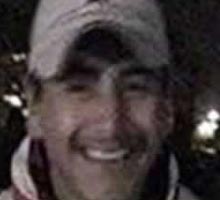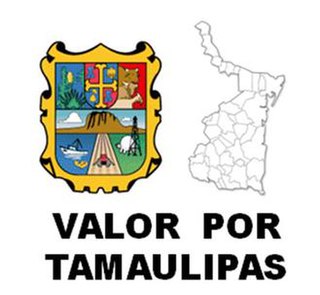
Tamaulipas, officially the Free and Sovereign State of Tamaulipas, is a state in the northeast region of Mexico; one of the 31 states which, along with Mexico City, comprise the 32 Federal Entities of Mexico. It is divided into 43 municipalities.

Eugenio Javier Hernández Flores, is a Mexican politician affiliated with the Institutional Revolutionary Party (PRI). He was the mayor of Ciudad Victoria from 2001 to 2004 and Governor of the state of Tamaulipas from 2004 to 2010, and was also federal deputy in 2000 and coordinator of the Financial Committee of Tomas Yarrington during his campaign. On May 27, 2015, he was indicted on charges of money laundering alongside his brother-in-law Oscar Gomez Guerra by the United States Department of Justice (USDOJ).

Los Zetas is a Mexican criminal syndicate, regarded as one of the most dangerous of Mexico's drug cartels. They are known for engaging in brutally violent "shock and awe" tactics such as beheadings, torture, and indiscriminate murder. While primarily concerned with drug trafficking, the organization also runs profitable sex trafficking and gun running rackets. Los Zetas also operate through protection rackets, assassinations, extortion, kidnappings and other activities. The organization is based in Nuevo Laredo, Tamaulipas, directly across the border from Laredo, Texas. The origins of Los Zetas date back to the late 1990s, when commandos of the Mexican Army deserted their ranks and began working as the enforcement arm of the Gulf Cartel. In February 2010, Los Zetas broke away and formed their own criminal organization, rivalling the Gulf Cartel.

The Gulf Cartel is a criminal syndicate and drug trafficking organization in Mexico, and perhaps one of the oldest organized crime groups in the country. It is currently based in Matamoros, Tamaulipas, directly across the U.S. border from Brownsville, Texas.
The timeline of some of the most relevant events in the Mexican drug war is set out below. Although violence between drug cartels had been occurring for three decades, the Mexican government held a generally passive stance regarding cartel violence through the 1980s and early 2000s.

Jorge Eduardo Costilla Sánchez, is a Mexican former drug lord and top leader of the criminal drug trafficking organization known as the Gulf Cartel. He was among Mexico's most-wanted drug lords.

Joint Operation Nuevo León-Tamaulipas is an anti-drug joint operation in two Mexican states of Tamaulipas and Nuevo León by Federal Police and the Mexican Armed Forces. The objective of the joint operation is to eliminate Los Zetas and Gulf Cartel operations in the area. So far, many cartel members have been either killed or arrested. Recently Los Zetas and the Gulf Cartel have broken relations and started fighting each other.
Coordinated Operation Chihuahua or formerly known as Joint Operation Chihuahua is a Military and Federal Police operation started in 2008 by the Mexican Army and Policía Federal Preventiva. The objective is to "besiege" Ciudad Juárez to concentrate forces and saturate the area to confront the three cartels already operating in the city. Ciudad Juárez is known to be one of the most dangerous cities in the Americas. In the year 2007 more than 100 police officers were killed in Juárez in attacks blamed on organized crime. As a result of drug cartel violence, President Felipe Calderón has previously launched other Joint Operations in other states.

Antonio Ezequiel Cárdenas Guillén, commonly referred to by his alias Tony Tormenta, was a Mexican drug lord and co-leader of the Gulf Cartel, a drug trafficking organization based in Tamaulipas. He headed the criminal group along with Jorge Eduardo Costilla Sánchez. Antonio was considered by Mexican security forces as one of Mexico's most-wanted men.
The 2010 San Fernando massacre, also known as the first massacre of San Fernando, was the mass murder of 72 undocumented immigrants by Los Zetas drug cartel in the village of El Huizachal in the municipality of San Fernando, Tamaulipas, Mexico. The 72 killed—58 men and 14 women—were mainly from Central and South America, and they were shot in the back of the head and then piled up together. The bodies were found inside a ranch on 24 August 2010 by the Mexican military after they engaged in an armed confrontation with members of a drug cartel. They received information of the place after an Ecuadorian survived a shot to the neck and face, faked his death, and then made his way out of the ranch and up to a military checkout to ask for help. There were only three survivors. Investigators later mentioned that the massacre was a result of the immigrants' refusal to work for Los Zetas, or to provide money for their release.
This is a list of events that happened in 2010 in Mexico. The article also lists the most important political leaders during the year at both federal and state levels.
Gente Nueva, also known as Los Chapos, in reference to their drug lord Joaquín Guzmán Loera, is a large group of well-trained and experienced gunmen that function as one of the elite armed wings of the Sinaloa Cartel, created to counter, battle and destroy the Juárez Cartel's influence in the Mexican north-west, as well as to battle and destroy La Línea which is currently the Juárez Cartel's largest remaining cell.
The 2011 San Fernando massacre, also known as the second massacre of San Fernando, was the mass murder of 193 people by Los Zetas drug cartel at La Joya ranch in the municipality of San Fernando, Tamaulipas, Mexico in March 2011. Authorities investigating the massacre reported numerous hijackings of passenger buses on Mexican Federal Highway 101 in San Fernando, and the kidnapped victims were later killed and buried in 47 clandestine mass graves. The investigations began immediately after several suitcases and other baggage went unclaimed in Reynosa and Matamoros, Tamaulipas. On 6 April 2011, Mexican authorities exhumed 59 corpses from eight mass graves. By 7 June 2011, after a series of multiple excavations, a total of 193 bodies were exhumed from mass graves in San Fernando.

Nabor Vargas García is a Mexican suspected drug lord and one of the founders of Los Zetas, a criminal group formed by former soldiers of the Mexican Armed Forces.

Valor por Tamaulipas is a Facebook page that covered security updates in the Mexican state of Tamaulipas. It was founded by an anonymous user on 1 January 2012, and its goal is to share information with other social media users on the drug-related violence and risk situations all across the state. With over 515,000 likes on Facebook, Valor por Tamaulipas routinely posted messages and photos of crime scenes on its page. In a country where many journalists have been assassinated for writing about drug trafficking and organized crime, the page survives under anonymity, but it has not been immune to threats.

Miguel Villarreal was a U.S.-born Mexican suspected drug lord and high-ranking leader of the Gulf Cartel, a criminal group based in Tamaulipas. He was the crime boss of Reynosa, Tamaulipas. Nicknamed El Gringo in reference to his U.S. nationality, Villarreal was identified by authorities as a Gulf Cartel leader in 2010, when he allegedly commanded cells that fought Los Zetas drug cartel in northeastern Mexico. By 2011, he served as the regional kingpin in Miguel Alemán, Tamaulipas and ordered several kidnappings and killings in the South Texas border area from Mexico.

Benjamín Galván Gómez was a Mexican businessman and politician of the Institutional Revolutionary Party (PRI). He was the mayor of Nuevo Laredo, Tamaulipas, from 1 January 2011 to 30 September 2013. His political projects focused on promoting education, improving the standards of living, and in bringing back a sense of public security to the citizens of the city. He also owned the newspapers Primera Hora and Última Hora. During his mayoral administration in Nuevo Laredo, Galván received numerous threats from organized crime. Five months after his term, he was kidnapped and killed by alleged members of the Los Zetas crime syndicate.

Galdino or Galindo Mellado Cruz, commonly referred to by his alias El Mellado and/or Z-9, was a Mexican suspected drug lord and one of the founders of Los Zetas, a criminal organization originally formed by ex-commandos from the Mexican Armed Forces. He joined the Mexican Army in 1992 and was part of the Grupo Aeromóvil de Fuerzas Especiales (GAFE), an elite special forces unit of the Army. In 1999, he withdrew from the military and was recruited by the Gulf Cartel, a drug trafficking organization, shortly thereafter.

Edelio López Falcón, commonly referred to as El Yeyo, was a Mexican suspected drug lord and former high-ranking member of the Gulf Cartel, a criminal group based in Tamaulipas, Mexico. Prior to his involvement in drug trafficking, López Falcón owned a flower business in Miguel Alemán. He was part of the cartel during the 1990s and was a trusted enforcer of the former kingpin Gilberto García Mena. López Falcón's role in the cartel was managing drug shipments from Tamaulipas to the United States. Security forces believed López Falcón was not a violent crime boss; he preferred to indulge in his personal interests, which included promoting music and entertainment, managing his restaurant chains, and running his horse-breeding business. After joining the cartel, he continued to pose as a legitimate businessman to keep a low profile.

Omar Lorméndez Pitalúa is a Mexican suspected drug lord and high-ranking member of Los Zetas, a criminal group based in Tamaulipas, Mexico. He joined the Mexican Army in 1991 and deserted in 1999. He then joined the Gulf Cartel under kingpin Osiel Cárdenas Guillén, becoming one of the first members of its newly formed paramilitary wing, Los Zetas. Like Lorméndez Pitalúa, most of the original members of Los Zetas were ex-military. Los Zetas was responsible for providing security services to Cárdenas Guillén and carrying out executions on the cartel's behalf. In 2001, Lorméndez Pitalúa worked on assignments for Los Zetas and was responsible for ensuring that smugglers paid taxes to the Gulf Cartel and operated under their supervision in Matamoros.














